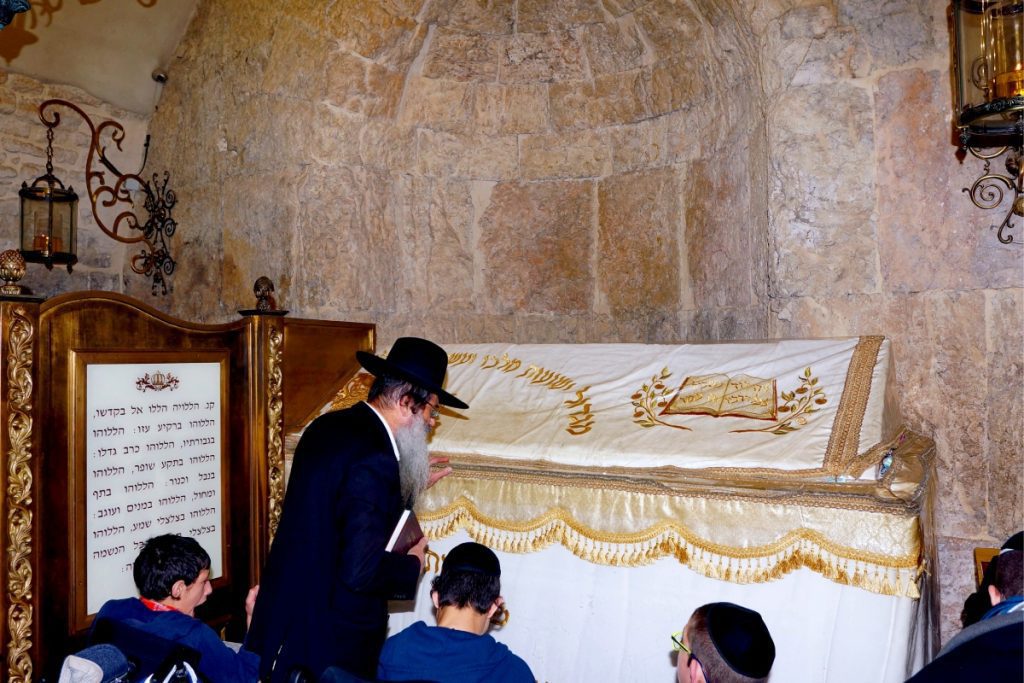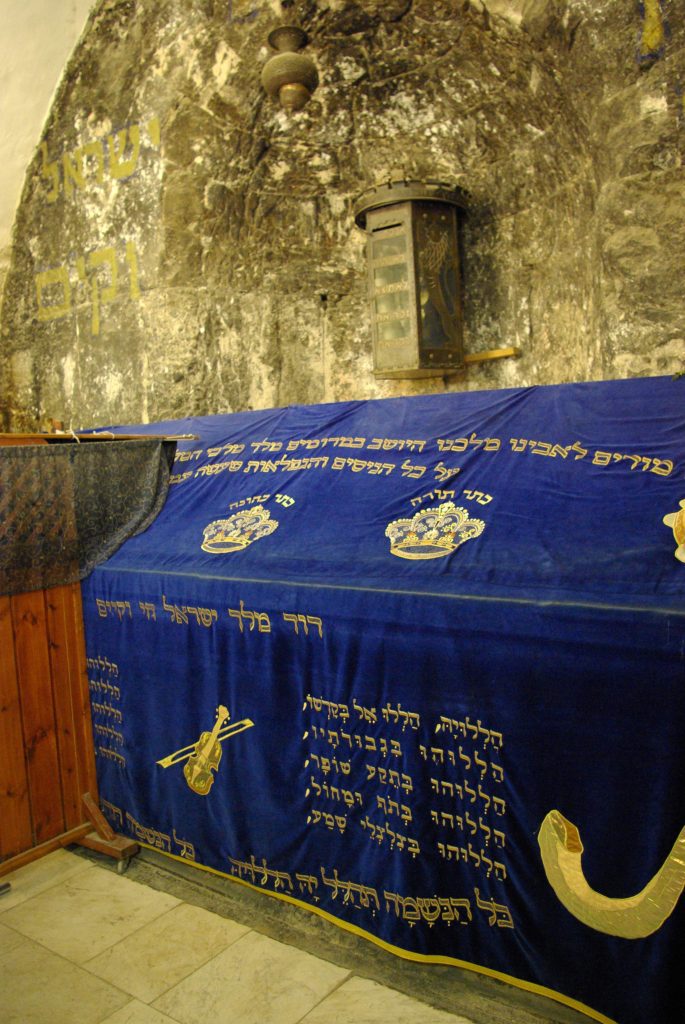King David’s Tomb is the traditional burial place of biblical king David of Israel, according to a Christian, Jewish, and Muslim tradition beginning in the 9th or 12th century CE; some two millennia after the traditional time of David. The majority of historians and archaeologists do not consider the site to be the actual resting place of King David.

Early History of King David’s Tomb
Today when you tour Jerusalem you will find King David’s Tomb in a corner of a room situated on the ground floor remains of the former Hagia Zion. It’s an ancient house of worship. In fact, the upper floor of the same building has traditionally been viewed by Christians as the “Cenacle” or “Upper Room”. In other words, the site of the Last Supper.

Though the Hebrew Bible and the Old Testament locate it southwards; in the City of David near Siloam. In the 4th century CE, he and his father Jesse were believed to be buried in Bethlehem. The idea that David was entombed on what was later called Mt Zion dates to the 9th or 12th century CE. The Mount Zion conquered by David according to the Books of Samuel was wrongly ascribed by medieval pilgrims to this site, and David was presumed to be buried there.
King David’s Tomb in the Crusader Period
Writing around 1173, the Jewish traveler Benjamin of Tudela recounted a colorful story that two Jewish workers employed to dig a tunnel came across David’s original splendid palace; replete with gold crown and scepter and decided that the site must be his tomb. The Gothic cenotaph preserved to this day is the work of the Crusaders.
In 1332 the Franciscans, the officials’ representatives of the Roman Catholic church in the Holy Places after the final Muslim expulsion of the Crusaders; move their headquarters to the Cenacle, having acquired it in 1332 for 30,000 ducats.
Mosque
According to Dominican pilgrim Felix Fabri, in 1429 Mamluk Sultan Barsbay took part of the lower floor of the complex away from the Franciscans and converted the tomb chamber into a mosque. Though it was returned a year later; possession alternated back and forth until 1524 when Ottoman Sultan Suleiman the Magnificent expelled the Franciscans from the entire complex. The resulting Islamic shrine was entrusted to Sufi Sheikh Ahmad Dajani and his posterity.
The Franciscan Monastery in Jerusalem during the 16th century did not encompass today’s King David’s Tomb complex. The Sharif Ahmad Dajani, the first to hold the Dajani name; constructed the neglected Eastern side of today’s King David Tomb complex—where the tomb is located—in the 1490s. He established a place for Muslim prayer on the Eastern part of today’s complex. In 1552 the Franciscans were ejected from the Cenacle; on account of alarm caused by a rumor that some Christian workmen had discovered the King David’s Tomb and Solomon’s and the other Kings of Judah. The “Ibn Dawood” mosque; a title given Sheikh Ahmad Dajani by the residents of Jerusalem; was established for Muslim prayers under the patronage of Sultan Suleiman the Magnificent and the supervision of al-Shareef Sheikh Ahmad bin Ali Dajani.
Management of the site was transferred to the Muslim Palestinian family al-Ashraf Dajani al-Daoudi family (descendants of the Prophet Mohammad’s grandson Hussein) by an edict from Sultan Suleiman the Magnificent in 1529. Since then, the Dajani family supervised and maintained this site.
Question of Athutencicty
The authenticity of the site has been challenged on several grounds. According to the Bible; David was actually buried within the City of David together with his forefathers; by contrast, the 4th century Pilgrim of Bordeaux reports that he discovered David to be buried in Bethlehem, in a vault that also contained the tombs of Ezekiel, Jesse, Solomon, Job, and Asaph, with those names carved into the tomb walls.
David – A Multifacaded Figure in the Bible
So on my private tours of Jerusalem, I always like to stop in and pay my respects. King David is one of the more multi-faceted figures in the Bible right? In other words, he is known for so many good things. For example a brave warrior; a gifted musician; and even a poet. Of course, I mean the famous lamentation poem that he wrote for Saul and his sons. According to the Book of Samuel Saul and his sons realize that their odds against the philistines are low. So Saul commits suicide on top of Mt. Gilboa.
David hears the news about their death. Especially about the death of Jonathan his close friend. So the bible narrates David writes this short but quite powerful lamentation poem. In fact, David course Mt. Gilboa and grieve for the death of Saul and Jonathan. Another interesting story in the Bible about David is regarding Bethsheba. She was married to Uriah the Hittite. But David wanted her at all costs. So he made sure Urriah will die so he could take his place.
Nathan the profit rebukes David for that horrible sin. Also, God punishes David by bringing calamity to his house. Absalom his son rebels against him and dies. His son Amnon rapes his sister Tamar and dies as well. So as you can see David has very different aspects. I guess that is why he is so admired. Because he is human I guess just like us. You can read the Book of Samuel and even though 3000 years have passed; his internal conflicts; David’s passions; his sins are all things that even today we can still relate to, right?

